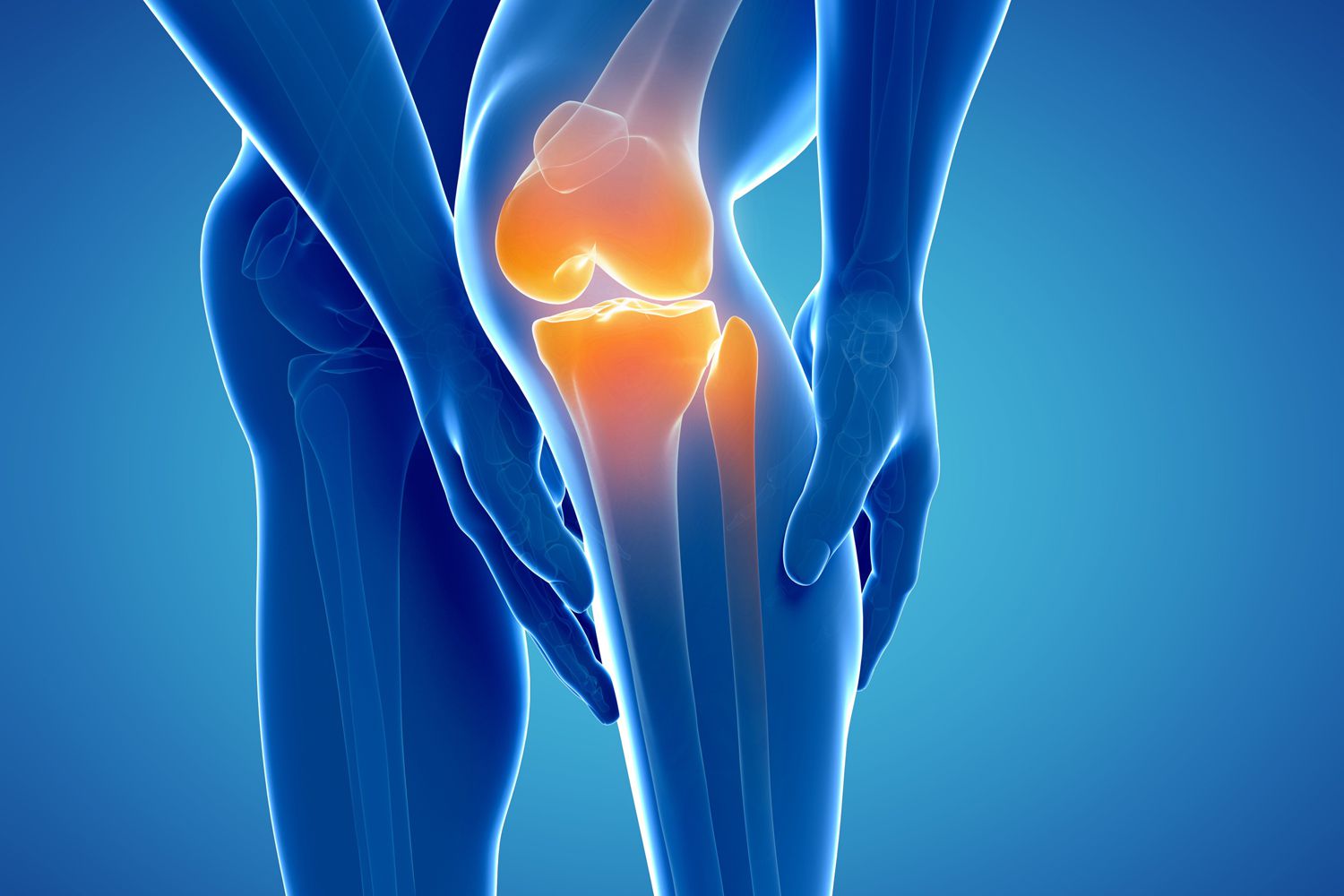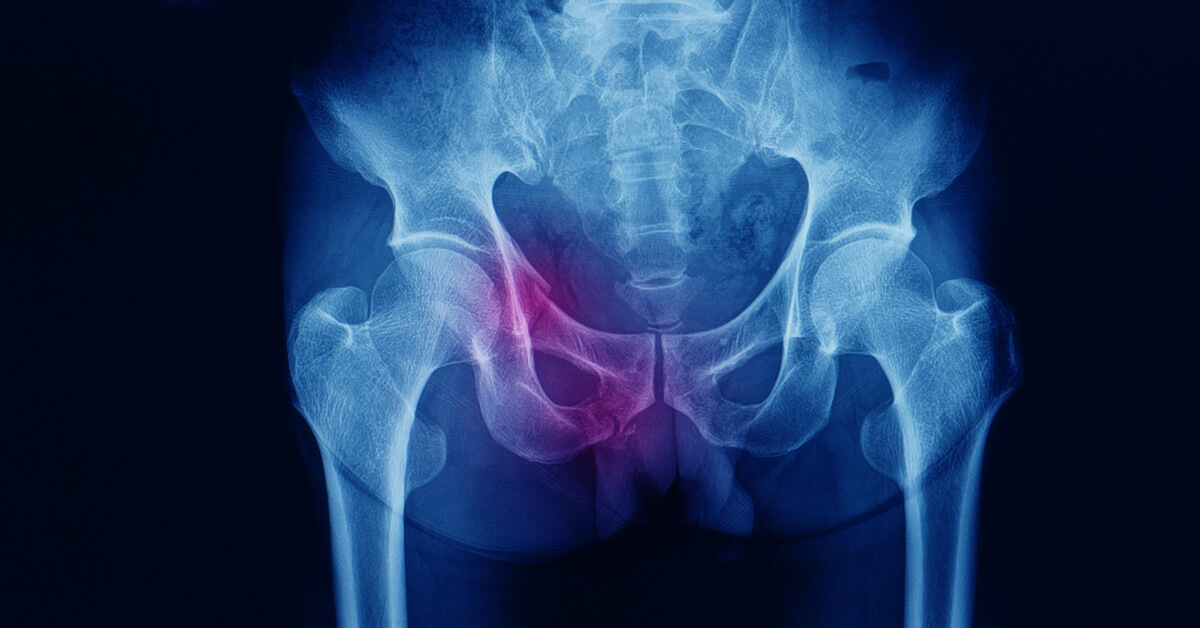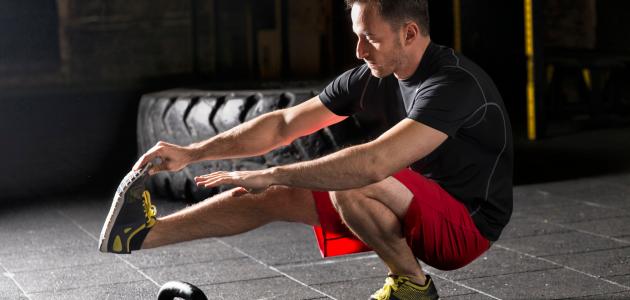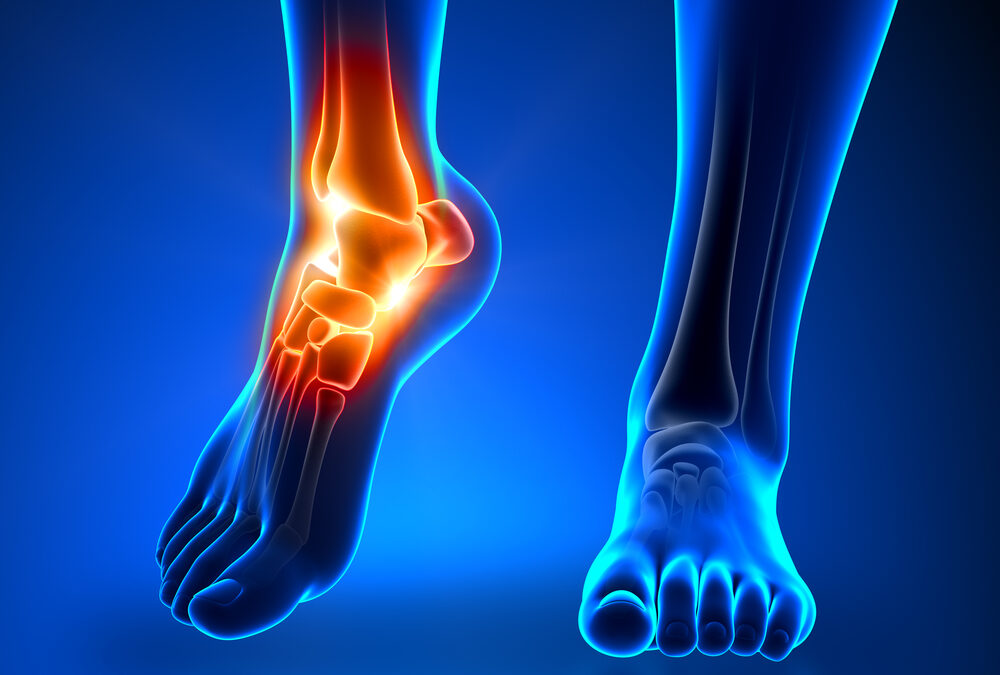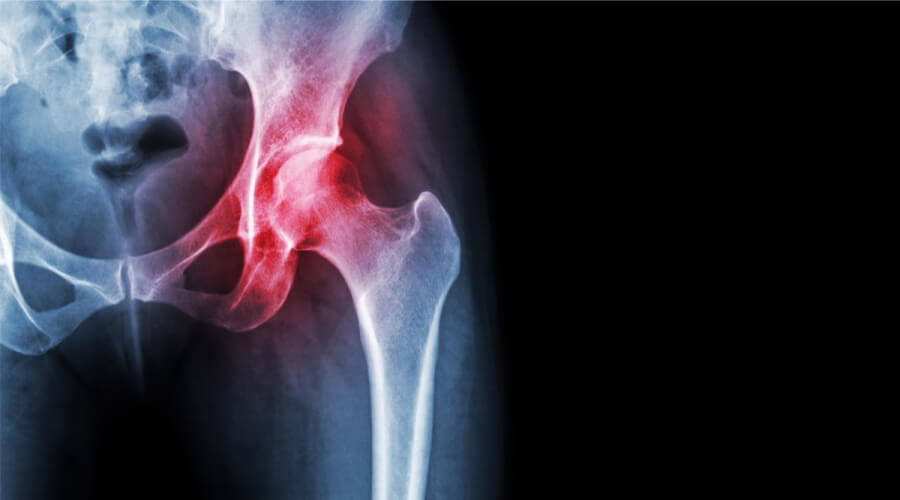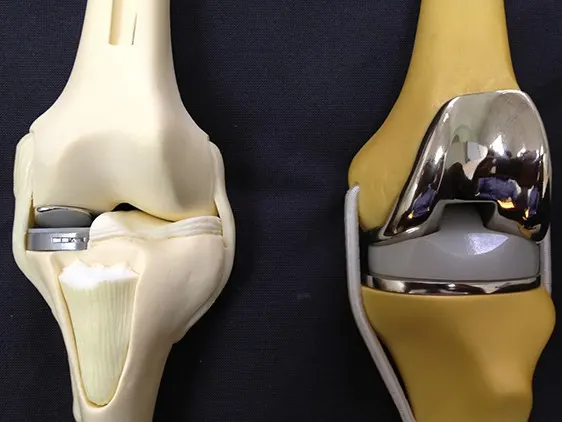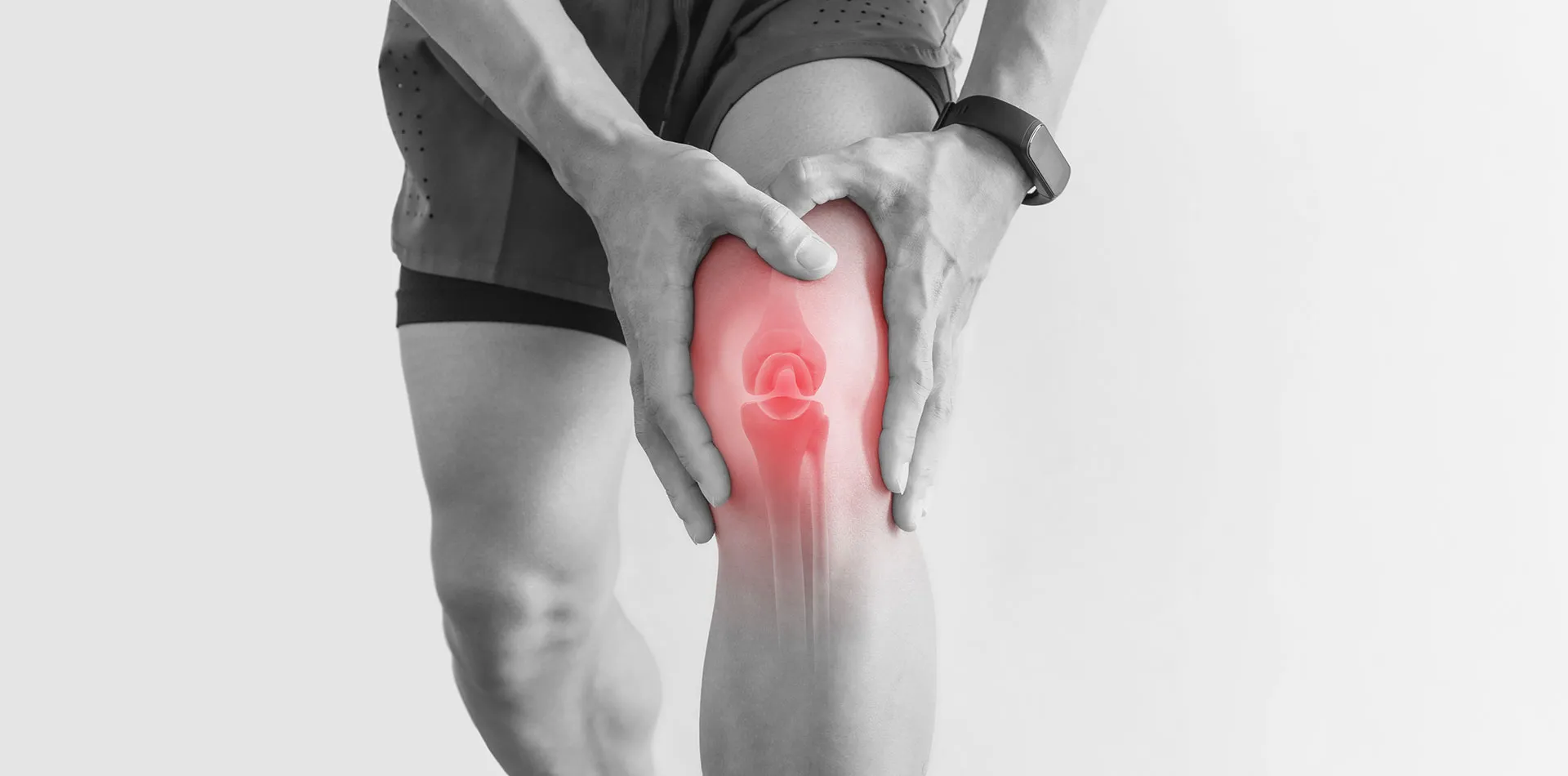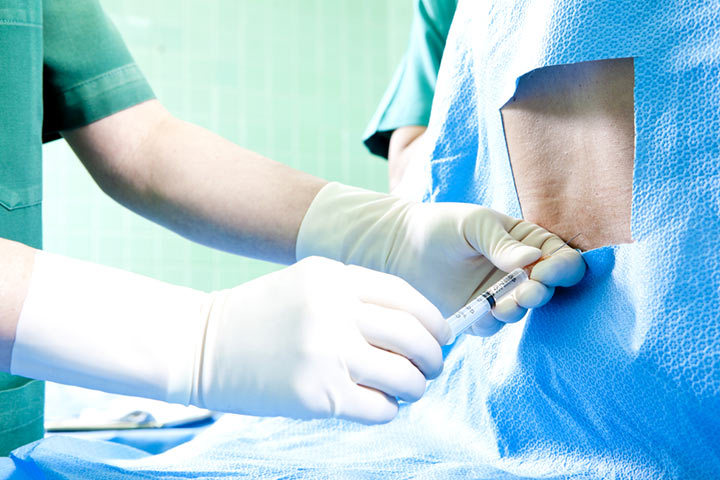!Learn about knee joint replacement surgery and its success rate
Knee joint replacement surgery, the knee joint may be subject to many problems that require joint replacement, and through this article we will get to know in detail the most important reasons that lead to joint replacement and the procedures followed to perform the surgery and the resulting consequences, so follow us so that every new thing related to that surgery reaches you.
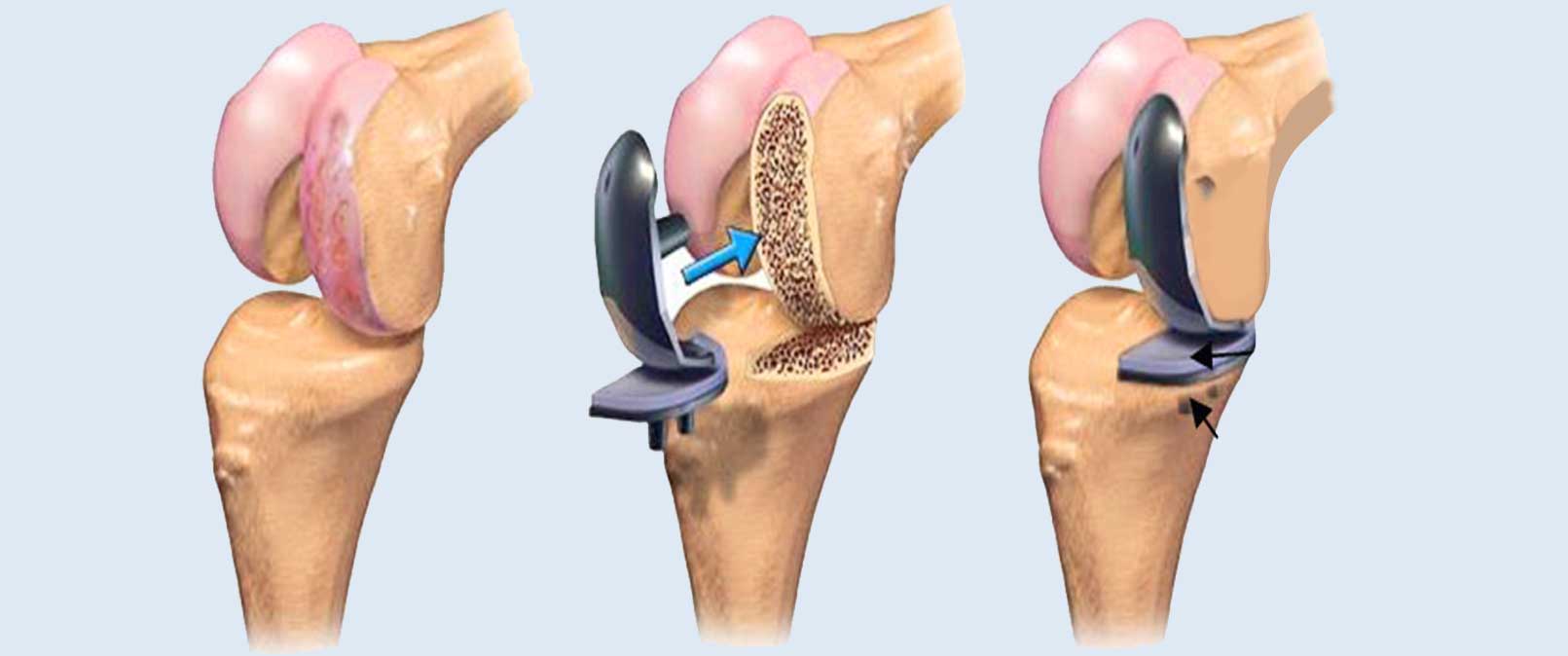
Knee joint replacement surgery
Knee joint replacement is a necessary surgical procedure in case the joint is damaged due to chronic diseases or acute injuries. This surgery aims to replace damaged joint parts with an artificial joint, in order to improve movement and relieve pain in patients, and although the decision to perform knee joint replacement surgery depends on the doctor’s assessment and the patient’s needs, there are several common reasons that may lead to joint replacement.
Chronic knee pain is one of the other painful causes that require joint replacement. If medications and traditional treatments fail to adequately relieve pain, doctors may resort to joint replacement surgery to get rid of this problem and improve the patient’s quality of life.
Before performing knee joint replacement surgery, the medical team evaluates the patient’s condition and analyzes x-rays and laboratory tests to determine the condition of the joint and the extent of damage to it. Knee joint replacement surgery involves removing damaged parts and replacing them with artificial parts that suit the patient’s condition and needs.
In conclusion, knee joint replacement is an important surgical procedure to improve joint condition and relieve pain and stiffness of movement. Experienced specialized doctors and medical facilities should be consulted to successfully perform this surgery and then restore the patient’s life normally and healthily. Benefit from Dr. Amr Amel’s extensive experience in knee joint replacement to achieve the best possible results, with full commitment to comprehensive care and follow-up after surgery.
Reasons for Changing Knee Joint
The knee joint is one of the vital joints in the human body and some conditions may require changing it due to health problems that affect its functions and cause severe pain. In this article, we will review 6 of the most common reasons that may require knee joint replacement surgery.
- Osteoporosis: Osteoporosis is one of the main reasons for knee joint replacement. This condition occurs due to low bone density, which makes them fragile, easily damaged and fractured. When the knee joint is affected by osteoporosis, its movement becomes difficult and painful, which requires joint replacement surgery.
- Arthritis: Many people suffer from rheumatoid arthritis that affects joints in general, including the knee joint. This disease causes stiffening, swelling and pain in the affected joints, making movement difficult and uncomfortable. In some severe cases, knee joint replacement is the best solution.
- Knee arthritis: When the knee joint cartilage is damaged due to age or previous injury, this condition known as knee arthritis occurs. Knee arthritis affects the normal function of the joint and causes severe pain and swelling. If conventional treatments do not respond, it may become necessary to undergo knee joint replacement surgery.
- Sports injuries: Excessive force or repetitive stress on the knee joint can affect and damage it. Sports injuries can vary, from a torn cruciate ligament to a bone fracture. In some acute cases, they may result in the necessity of knee joint replacement to restore its normal functions and avoid further problems in the future.
- Wear and tear due to previous surgery: Some people may need knee joint replacement due to a previous failed or unsuccessful surgery. Some surgical modifications such as replacing a previous implant or cleaning the joint may not lead to sufficient improvement in the patient’s condition, which may require considering replacement.
- Structural defect: There may be a structural defect in the knee joint itself that requires its replacement, such as congenital defects or deformities that work to reduce joint function and cause constant pain. In such cases, there is no other option but to replace the joint to restore its natural position.
Diagnosis before Knee Joint Replacement
Accurate diagnosis of the patient’s condition before undergoing knee joint replacement surgery is one of the essential steps to ensure the success of the surgery and achieve the best possible results. Before the surgeon intervenes surgically, the treating physician must perform many tests and questionnaires to get an accurate picture of the patient’s condition, assess potential health threats, and clarify the next steps for the patient.
One of the most important steps in diagnosis before knee joint replacement is the clinical examination. The treating physician inquires about the patient’s medical history, expectations, and symptoms such as pain, stiffness, and swelling. The patient provides important information about the cause of pain and its development, which can help the doctor determine the correct diagnosis.
After that, a physical examination of the affected knee is performed. The doctor examines areas of tenderness, swelling, changes in motion, and muscle stability to assess the condition of the affected joint. He also compares the condition of the affected knee with the healthy knee to identify clear differences in diagnosis.
Some other tests that may be requested before knee joint replacement surgery include x-rays and magnetic resonance imaging. These tests help determine the extent of damage to the joint and assess the condition of surrounding tissues. X-rays can reveal damaged bones and deformities, while magnetic resonance imaging can clarify soft tissues such as cartilage, ligaments, and tendons.
Conducting these tests before knee joint replacement surgery can help the doctor make an accurate diagnosis of the patient’s condition and design the appropriate treatment plan. The treatment plan usually includes lifestyle modification and weight reduction before surgery, as well as anti-inflammatory medications and physical therapy sessions.
Medical care before, during and after knee replacement surgery
Knee replacement surgery is an important procedure that requires proper medical care before, during and after the operation. This procedure is very important for improving the quality of life of patients suffering from severe knee joint damage.
Before surgery, several tests are conducted to determine the patient’s eligibility for surgery, appropriate medical advice is provided to the patient to ensure their understanding of the procedure and potential risks, the patient must also stop taking certain medications and herbs for a period of time before the operation to minimize complications, and nutrition advice is also provided to enhance the patient’s health and speed up recovery.
During surgery, a qualified surgical team works to remove the damaged articular surface and replace it with an artificial knee joint. This is done through surgery that can take a few hours, where modern techniques are applied to ensure the success of the surgery and minimize complications.
After surgery, the patient is directed to adhere to complete rest and follow medical instructions, which include using crutches or a walker to assist in mobility, following a schedule for taking medications on time, and performing special rehabilitation exercises to strengthen muscles around the knee, as well as avoiding strenuous athletic activities or any activity that places excessive pressure on the joint to limit any potential damage.
After a period of treatment and rehabilitation, patients can gradually return to normal daily activities. Ongoing cooperation with the healthcare team and following the instructions provided contribute to achieving successful outcomes for knee replacement surgery. You can overcome knee pain limits with Dr. Amr Amal, a knee replacement expert, who provides innovative surgical solutions to improve your quality of life and increase your mobility.

Potential complications after knee replacement
Some may be concerned about complications that may occur after knee replacement surgery. However, it should be noted that these complications are rare and occur in certain cases. To learn about these complications and how to deal with them, read on:
1. Persistent pain and stiffness: After surgery, the patient may experience some pain and swelling around the knee area. Pain may persist for a few weeks or months after surgery, accompanied by stiffness and difficulty moving the replaced knee. To alleviate these complications, the patient is advised to follow physiotherapy sessions to improve knee movement and relieve pain.
2. Blood clots: The likelihood of blood clots increases after knee replacement surgery. Blood accumulation may occur in the deep veins of the legs or lungs, leading to severe cramps and pain in the area. To reduce the likelihood of blood clots, the patient is advised to follow medical instructions and work to stimulate blood circulation and early mobility after surgery.
3. Infection: Surgical infection is a rare but potential complication. An infection may occur in the artificial knee joint, requiring immediate treatment to avoid worsening the situation. To prevent infection, the patient must follow good hygiene instructions and take prescribed antibiotics.
4. Loosening or wear of the prosthesis: In some cases, delayed bonding of the prosthetic joint may occur due to loosening or wear. In this case, the patient may need knee replacement surgery again to improve joint stability and reduce pain and uncomfortable movement.
5. Blood clots and dealing with them
In order to reduce the likelihood of blood clots after knee replacement surgery, the patient is advised to follow the treating physician’s instructions. Measures that can be taken to reduce this outcome include:
- Starting early mobility after surgery.
- Wearing elastic bandage or compression stockings to improve blood circulation.
- Taking blood thinners exactly as prescribed by the doctor.
- Avoiding prolonged sitting for long periods and doing appropriate leg exercises to improve blood circulation.
What physiotherapy is followed after knee replacement?
After undergoing knee replacement surgery, physiotherapy is an important part of the recovery process. The goal of physiotherapy after knee replacement surgery is to promote healing and restore strength and movement of the affected joint. The athletic exercises that are later recommended for physiotherapy are somewhat similar to the warm-up exercises that players do before starting athletic training. Performing these exercises is also essential before starting physiotherapy sessions after knee replacement in order to achieve effective results in treatment and recovery.
The physiotherapy program after knee replacement surgery is tailored to the patient’s condition and surgeon’s recommendations. The patient usually starts with light exercises to improve movement and flexibility in the affected joint. These exercises may include walking on the ground or in a swimming pool, decompression exercises, and exercises specific to the strength of the muscles surrounding the knee. The patient’s weight bearing and mobility are gradually increased using assistive devices such as crutches or specially designed exercises to improve balance and stability.
In general, the goal of physiotherapy after knee replacement surgery is to regain muscle strength and joint flexibility, improve knee and foot motion, and return the patient to daily activities without pain or restriction. The role of physiotherapy in promoting recovery and improving surgical outcomes and quality of life after knee replacement is essential, so close collaboration between the patient and the medical director of the physiotherapy department is critical to achieving effective and successful results in patient recovery.

Knee replacement success rate
Knee replacement surgery is one of the successful surgeries that has achieved a success rate of over 95 percent over the past ten years. The patient may feel anxious when advised to undergo this procedure as a final solution for pain, as it requires surgical intervention. However, the knee replacement success rate is encouraging and helps restore confidence in patients suffering from knee joint pain.
Knee replacement is a surgical procedure that aims to improve the patient’s condition and relieve chronic pain caused by joint damage. A stable, well-fitting artificial joint is implanted to mimic the natural function of the knee joint. This procedure requires great experience, modern technology and it is important that the patient cooperates with the medical team to ensure the success of the procedure.
With Dr. Amr Amal, the knee replacement experience becomes safer and more comfortable, as he uses advanced techniques and provides personal care to ensure the best results.
What is the recovery time from knee replacement surgery?
The recovery time from knee replacement surgery depends on several factors, the patient must understand that full recovery is not a quick process, but requires patience and follow-up. Adhering to a physiotherapy program and the necessary exercises is important to achieve the best results.
In general, recovery from knee replacement surgery includes several stages. In the first stage after surgery, the patient needs a period of rest in the hospital. This stage usually lasts for several days up to a week. During this period, there is swelling, pain and a need to use ice and take medications prescribed by the doctor to relieve pain.
After the patient is discharged from the hospital, he begins the next stage which requires rehabilitation and physiotherapy. This stage can last for several weeks to several months. During this period, the patient performs the exercises prescribed by the doctor and specialist, which aim to strengthen the muscles surrounding the knee and regain the normal range of motion of the knee. The exercise program is tailored according to the individual case and the patient’s ability.
Although most patients feel significant improvement after several weeks of physiotherapy, the patient sometimes needs more time before feeling complete improvement. Recovery time is affected by factors such as patient age, physical fitness and overall health, knee condition prior to surgery, and the patient’s body response to surgery.
Is knee replacement surgery dangerous?
Knee replacement surgery is a surgical procedure used to treat osteoporosis and joint damage, and it is a joint decision between the patient, surgeon and family. There may be some concerns about the risks of this procedure, but it is necessary to look at the potential benefits of this procedure. Knee replacement surgery aims to relieve symptoms of arthritis and improve movement and function of the affected joint, as it helps improve quality of life for patients suffering from severe joint pain and cartilage damage due to chronic arthritis or osteoporosis.
Despite the obvious benefits of knee replacement surgery, it is important to acknowledge some potential risks. There may be surgical risks resulting from any surgery, such as infection or bleeding, but these conditions rarely occur and usually happen in complex cases. There are also studies indicating an increased risk of heart attacks after knee replacement surgery, but this increase is transient and temporary in most cases. In general, potential risks in patients with osteoporosis should not prevent them from benefiting from this type of surgery.
Live a knee pain-free life with Dr. Amr Amal, who is distinguished by his extensive experience in knee replacement, ensuring fast recovery and better quality of life.
Cost of knee replacement surgery
Knee replacement is a surgical procedure used to treat knee pain and difficulty moving the joint. The cost of this surgery varies depending on different factors, such as the patient’s condition, the surgical technique used, the doctor’s experience and competence, hospital costs, and pre- and post-operative care. For more information on the price of surgery and its results click here.
The cost of knee replacement surgery in Egypt ranges from 50,000 to 70,000 EGP. This cost may vary depending on the country where the surgery is performed, the level of medical care, and the surgeon’s experience. Among the criteria that affect determining the cost of surgery, this includes the prices of anesthesia materials and surgical tools used in the operation. These costs should be calculated as part of the total cost of surgery.
Choose Dr. Amr Amal for knee replacement surgery and enjoy the latest surgical techniques that provide high precision and satisfactory results, so you can return to your beloved activities with confidence.
Walking after knee replacement surgery
After knee replacement surgery, the patient must follow the doctor’s instructions, which include movement and walking in the first days after the operation. Some patients may wonder why walking is necessary and how it affects the effectiveness of the new joint. However, patients should realize that walking after surgery plays an important role in the healing process and strengthening the muscles that support knee movement.
Medically, walking after knee replacement helps speed up healing and enhance the ligaments needed to support the new joint. Notably, in the first days after surgery, walking should be done carefully and gradually, while maintaining body balance and avoiding excessive stress on the new joint.
Doctors usually suggest that patients walk intermittently in the first days after surgery, using canes or supportive walkers to assist moving in a safe and balanced manner. The proper walking regimen is determined by the treating physician, and may vary from case to case depending on the extent of complexity and condition the prosthetic joint suffers from.
Patients are advised to avoid strenuous activities in the first days after surgery. For example, jumping or fast running should be avoided, as these activities can weaken the knee’s bone framework and increase the likelihood of future problems. Walking should also be light and regular, with stopping to rest if there are any signs of stress or pain.
In general, patients should not worry about their ability to walk after knee replacement surgery. Even if there are some challenges and difficulties at first, adhering to the doctor’s instructions and performing appropriate exercises and movements will help strengthen muscles and gradually restore natural movement.
Resuming normal daily activities such as walking, sitting and standing is necessary for recovery after knee replacement surgery, so patients should carefully follow the doctor’s instructions, do appropriate exercises and movements, be careful to avoid excessive exertion, and monitor any abnormal symptoms. If in doubt, patients should contact their doctor for necessary advice.

Best doctor for knee replacement surgery in Cairo
The best doctor for knee replacement surgery in Cairo is Dr. Amr Amal.
Dr. Amr Amal is considered one of the best doctors in Egypt in this field, as Dr. Amr Amal is distinguished by his extensive experience and specialization in bone and joint surgery. He obtained his degree in orthopedic surgery from Ain Shams University Faculty of Medicine with honors, and Dr. Amr Amal is an expert in the different joint disease treatment methods, especially knee replacement surgery. Dr. Amr Amal provides his patients with distinguished medical service and takes into account preserving the patient’s safety, providing effective and optimal treatment.


